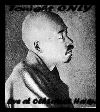Haiku is a non-fiction observation as a kind of short-hand for remembering events or incidents of nature.
Blues are comprised of 12 bars (or measures). A specific series of notes is also utilized in the blues.
Haiku composition 3 lines of 5 then 7 then 5 again without rhythm.
The Blues originated on Southern plantations in the 19th Century. Its inventors were slaves, ex-slaves and the descendants of slaves - African-American sharecroppers who sang as they toiled in the cotton and vegetable fields.
Haiku is considered to have been created by the Japanese poet Matsuo Basho Bashō who was born in 1644, near Ueno in Iga Province-old province of Japan in the area that is today western Mie Prefecture.
Early Blues Masters:
W. C. Handy (1873-1958) - "Father of the Blues," he is the first person to publish a composition with the term "Blues" in the title and utilizing "blue notes" (flatted thirds and sevenths). "Memphis Blues," published in 1912, along with his famous "St. Louis Blues" two years later, first brought the genre to the mass public.
Mamie Smith (1883-1946) - Her "Crazy Blues" is considered the first Blues recording ever. The record sold an incredible million copies in the first six months! This success opened the floodgates, as record labels and talent scouts began to scour the country for more Blues singers to record.
Gus Cannon (1885-1979) -Gus Cannon bridged the gap between early Blues and the Folk and minstrel styles that preceded it. He was the man, along with his band Gus Cannon's Jug Stompers, featuring legendary harpist Noah Lewis, that helped start and define the early Jug band style, prevalent in Memphis in the '20s and '30s.
Huddie Ledbetter Leadbelly (1888-1949) - Was the first Blues artist to achieve fame with white audiences. Many of his compositions from his extensive songbook have become classics of Folk, Blues, and Popular music. After Leadbelly's release from prison in 1934, Alan Lomax recorded a multitude of his performances for the Library of Congress.
Big Bill Broonzy (1893-1958) -Was a most versatile performer, being equally adept at solo acoustic Folk-style, Ragtime, and early urban small combo Chicago Blues. He was one of the first artists to spread the Blues overseas.
Masters of Haiku:
Matsuro Basho (1644-1694)-Made his living as a teacher, but renounced the social, urban life of the literary circles and was inclined to wander throughout the country, heading west, east, and far into the northern wilderness to gain inspiration. His poems were influenced by his firsthand experience of the world around him, encapsulating the feeling of a scene in a few simple elements.
Yosa Buson (1716-1783)-His original family name was Taniguchi. In the footsteps of his idol, Matsuo Bashō, Buson traveled through the wilds of northern Honshū that had been the inspiration for Basho’s famous travel diary, Oku no Hosomichi (The Narrow Road to the Interior). He published his notes from the trip in 1744, marking the first time he published under the name Buson.
Kobayashia Issa (1763-1827)-Poet and lay Buddhist priest of the Jōdo Shinshū sect known for his haiku poems and journals. He is better known as simply Issa-meaning Cup-of-tea. Reflecting the popularity and interest in Issa as man and poet, Japanese books on Issa outnumber those on Buson, and almost equal in number those on Bashō.
Masaoka Shiki (1867-1902)-Pen name of Masaoka Noboru, poet, literary critic, and journalist in Meiji period Japan. Shiki is generally regarded as the major figure in the development of modern haiku poetry and also played an important role in revitalizing tanka poetry.









No comments:
Post a Comment